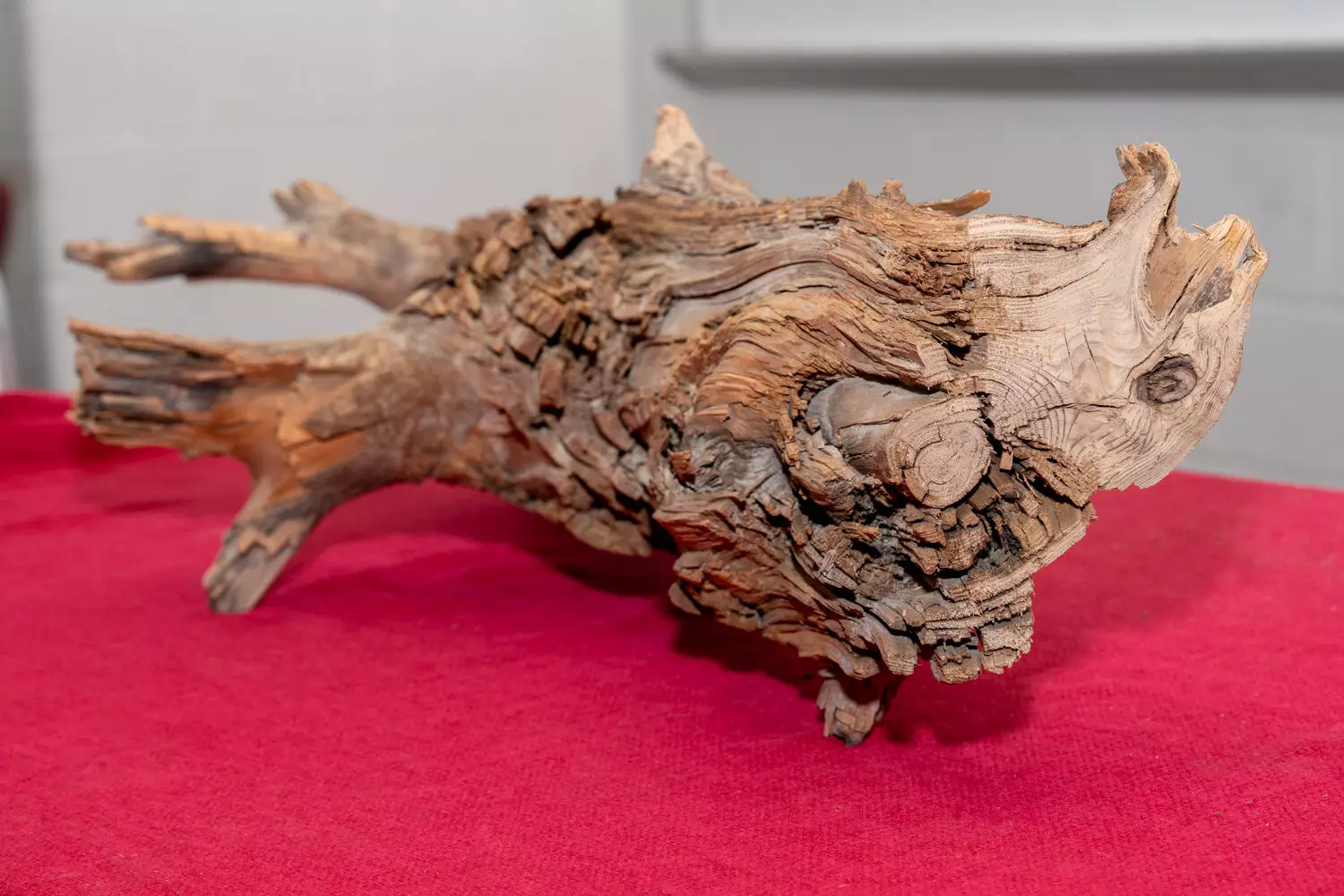In an intriguing revelation within the environmental sciences, researchers at the University of Maryland have unearthed a startling connection between ancient wood and climate change strategies. A team led by Professor Ning Zeng recently analyzed a remarkably preserved log dating back 3,775 years, excavated from a site in Quebec. Originally reported on September 27, 2024, their work underlines both the potential of this natural resource and its implications for innovative climate action. Far from being an outdated relic, this old log brings forth a fresh perspective on how humanity can effectively tackle the pervasive issue of global warming.
The ancient log, discovered approximately six and a half feet underground, has retained over 95% of its original carbon dioxide content due to the exceptional properties of the surrounding clay soil. Zeng’s comments bring to light the log’s impressive condition, even suggesting its worthiness for crafting furniture. This discovery prompts a deeper inquiry into what environmental conditions may contribute to the preservation of wood—insights that can now be harnessed to develop new methodologies for carbon sequestration.
The term “wood vaulting” may not be widely recognized, yet it represents a crucial aspect of ongoing research into climate solutions. Wood vaulting refers to the practice of taking non-commercial wood—such as fallen trees, discarded furniture, or remnants from construction projects—and burying it to impede its decomposition. This process prevents the release of carbon back into the atmosphere, thereby maximizing the carbon-sequestering potential of wood materials throughout their lifecycle. When living trees sequester carbon dioxide, they serve as invaluable tools against climate change; however, their death, followed by decay, presents a stark challenge. Wood vaulting seeks to flip this narrative by combating decomposition in a dynamic way.
Zeng eloquently articulated the misconceptions surrounding the process: while it appears deceptively simple to simply bury wood, the longevity of such methods requires an in-depth understanding of environmental conditions. “How many wooden coffins were buried in human history, and how many survived for thousands of years?” he pointedly questioned. The crux of this method lies in the preservation of carbon within these wooden forms—a goal that requires strategic scientific efforts.
Previous investigations into preserved wood have often neglected the equally important aspect of the surrounding soil. Through their recent findings, Zeng and his team are pioneering a more integrated approach, focusing on both the wood and the geological conditions essential for its preservation. The low-permeability clay soil surrounding the ancient log played a pivotal role, drastically reducing the flow of oxygen and thwarting decomposers such as fungi and insects.
Through collaboration with distinguished experts at UMD, Zeng was able to dive into detailed analyses of the log’s chemical and microstructural properties. This rigorous analysis revealed that the ancient cedar had not lost substantial amounts of carbon over millennia, thanks to the unique conditions in which it was buried. Such findings resonate with a wider narrative concerning soil science and climate strategy—demonstrating that understanding the environment in which we operate is just as vital as exploring the resources we seek to manage.
The implications of this research reflect both caution and opportunity. While wood vaulting shows promise as a low-cost, scalable solution for sequestering carbon, Zeng insists that it must not stand alone in the fight against climate change. “It’s essential to pair wood vaulting with other strategies to effectively tackle greenhouse gas emissions,” he notes. This approach captures the nuanced understanding needed in environmental policy—acknowledging that no single solution can address the complex challenge of global warming.
The excitement surrounding Zeng’s findings signals a growing trend toward innovative applications in climate science. Moving forward, the goal will be to optimize wood vaulting practices based on historical insights, aiding in global efforts to stave off the escalating climate crisis. By merging lessons from antecedent ecological conditions with contemporary scientific inquiry, researchers aim to forge pathways that resonate with long-term viability and sustainability.
The discovery of this ancient log heralds a pivotal moment in climate considerations, blending historical data with modern science to explore new frontiers in carbon sequestration. As efforts continue toward developing effective methodologies like wood vaulting, the preservation and understanding of ancient materials offer a hopeful trajectory in humanity’s ongoing battle against climate change.


Leave a Reply